Gaming In The Vietnam War – 50th Anniversary Of The Tet Offensive: Part Five
February 19, 2018 by oriskany
Here we are at last, Beasts of War, for the conclusion of our 50th Anniversary article series on the Vietnam War’s Tet Offensive.
Read The Gaming In Vietnam Series Here
So far we’ve seen:
- Part One: Introduction
- Part Two: Southern Battles near Saigon
- Part Three: Northern battles near the DMZ
- Part Four: Beginning of the Counterattack
But now it’s time to wrap up the Tet Offensive and review how its uncertain outcome wound up so dramatically changing the Vietnam War (and modern war in general). We’ll also hear from BoW community member Dave Wheeler (@davebpg) for a specific look at wargaming Vietnam in Flames of War: Tour of Duty.
Prognosis: Tet Offensive
Military Failure, Strategic Success?
So we’ve seen how the Tet Offensive attained nearly complete surprise. The NVA and especially the Viet Cong overran targets all across South Vietnam, but in the end were unable to hold any of them in the face of American firepower, or coordinate a successful “Phase Two” of their offensive.
In all, some 80,000 Viet Cong and NVA troops were committed to the Tet Offensive. At least 30,000 were killed or captured, making this a shattering military defeat, especially for the Viet Cong. In fact, the communist political structure in South Vietnam would never be the same, leaving the NVA to lead their war effort from now on.
Strategically, the Tet Offensive also failed because the anticipated popular uprising never took place. The Saigon government never fell. Communist forces had taken punishing damage and did not control anymore of South Vietnam’s geography or population than they had before.
Yet the Tet Offensive had a huge unintended strategic effect, one that demands study by anyone with even a passing interest in how modern warfare is actually fought (or decided). In the end, the battlefield that really counted in Vietnam wasn’t in the hills or the rice paddies or the streets or the jungles…it was on the TV screen.
In a time when live colour footage could be beamed directly into the minds of a democratic population, how a war looks is often more important than the actual battlefield situation. As vital as this point was in the television-dominated 1960s, its relevance in today’s internet age is perhaps even more prominent.
Up until Tet, the American public had been assured over and again, by both military commanders and civilian leaders, that they were winning the war in Vietnam. The enemy was being ground down by attrition, all that was needed was faith, trust, and patience to carry the American military to yet another victorious war.
Tet showed how wrong they were, and that the communists could strike anywhere. The Embassy itself was attacked, the ambassador roused from his bed by Viet Cong gunfire. As President Johnson himself lamented...
“Light at the end of the tunnel? We don't even have a tunnel! We don't know where the tunnel is!”
In the end, the argument can be made that the Tet Offensive, despite its immediate failure, convinced the American public that the Vietnam War could not be won. Militarily this wasn’t true, but Mr and Mrs John Q. Taxpayer had made up their minds. The American withdrawal from Vietnam was now only a matter of time and losses.
Vietnam In Flames Of War
by Dave Wheeler (@davebpg)
At the moment, Flames of War: Vietnam (FOWNAM) is in a state of flux. The original rulebook was published in 2011 (there was a starter book covering the battle of Ia Drang released with Wargames illustrated in 2009) with a follow-up expansion called Brown Water Navy (detailing the river battles in the south of the country) published in 2015.
There is, however, a new rulebook, being published in conjunction with Osprey, scheduled I believe for some time in 2018 which will bring the ‘Nam rules more into line with those used in Team Yankee and 4th edition Flames of War.
I’m expecting the new ‘Nam book to supersede some of the rules from the first book which I will discuss here.
The recent Team Yankee release, Stripes, has given us an insight into how Battlefront might alter the rules for transport helicopters in the new ‘Nam book so I will try to take this into account and not get bogged down into specifics which could be rendered irrelevant as soon as the new book comes out.
FOWNAM, in my opinion, does a very good job of representing the battlefield conditions the soldiers of both factions would have faced in Vietnam.
Transport helicopters, for example, are represented very well. For a start, it is impossible to buy (when list building) enough Huey’s to move all your infantry onto the table in one turn, instead they come on in waves and are deployed when and where the Allied player likes.
This holds true to real life as Huey transports where often in short supply, especially once battle damage and pilot casualties started to add up, so having to secure your LZ with your first “wave” of infantry to protect later transports is pretty accurate.
Gunships (Cobras and Huey variants) are even scarcer and are represented by the equivalent points cost. FOWNAM allows you to buy gunships as “Red Teams” and accompanying OH-6 (Loach) scout helicopters as “White Teams”, or you can mix them to make “Pink Teams” (another historically accurate point).
Loaches are able to act as spotters for the gunships whose rockets (treated as a sort of artillery in FOWNAM) can pound the enemy from a distance. With Loach pilots sometimes clipping the tops of trees with their rotors in order to accurately distinct enemy from friendly troops, you can imagine how dangerously vulnerable to ground fire they were.
In fact, I strongly recommend “Low-Level Hell” by Hugh Mills. Not just an excellent book on the subject, but a very compelling and exciting read as well.
The Allies don’t get to own the table however. The NVA and Viet Cong almost always use various hidden deployment methods, mostly consisting of tunnels. These allow NVA and VC units to deploy literally anywhere on the table that is not within a certain distance of an allied infantry unit.
Loaches acting as scouts can force the enemy to deploy further away but unprotected gunships are very vulnerable. This means it’s very easy for the NVA to encircle and pressure objectives, LZs, and allied infantry very easily. In effect, the NVA and VC “own the jungle” which is backed up by plenty of personal accounts on the subject.
The VC get all sorts of interesting rules to represent their guerrilla warfare style. As well as booby traps (punji sticks, claymores, machine gun bunkers etc.), they can also disguise themselves as civilians. Whilst in civilian disguise, they cannot be targeted, but nearby allied infantry can “question” the civilians to determine their true identity.
I’ve made reference a few times to the “Allies” in this writing, as Oriskany has pointed out there were troops in action here from many nations besides the United States. South Koreans and ANZACs (troops from Australia and New Zealand) also took part, as well as Taiwan, Laos, the Philippines, and of course South Vietnam itself.
Accordingly, FOWNAM allows you to build armies not only from the US (including armoured, air cavalry and riverine forces) but also ARVN (South Vietnamese) and ANZAC forces.
FOWNAM also has two rules sets presently not found in other FOW books, an absence which has long puzzled me. The first is the ability to keep artillery off the table. This makes perfect sense. Obviously, with the airmobile tactics of Vietnam, it would be daft to set up the artillery on the board before the infantry have even landed.
Besides, artillery nearly always operated from fixed firebases anyway. So unless the firebase itself was under attack, you’d never need put them on the table.
Instead, infantry stands above a certain rank (presumably with a radioman) can spot and call in the artillery. Why these rules haven’t found their way into regular Flames of War and especially Team Yankee is a mystery to me.
The other rule is the medevac choppers and medics that accompany the allied armies. In all honesty, they don’t make a huge difference. Wounded infantry must fall back until they meet up with a medic or medevac chopper. Once they do they roll to see if they are either okay to fight on or wounded badly enough to head back to base.
From my experience, this is rarely a game changer. It doesn’t make allied armies overpowered due to the effective “invulnerability” that a medic might offer. BUT…such enforced “casualty management” does create a fantastic narrative point to every game.
Securing your LZ to evacuate the wounded becomes such a distraction for the allied player that at times you completely forget to do important things like taking objectives, calling in air strikes etc. I suppose the screams of the wounded from your little metal and plastic figures gets too much for you!
And this leads me nicely onto the main reason why I like gaming in the jungles of ‘Nam. Every game turns into a movie, especially if you have the Rolling Stones or Credence Clear Water Revival playing in the background.
One of my favourite moments was towards the end of a game. Most of my US infantry had already left the board, leaving behind one badly mauled platoon to hold the LZ waiting for final extraction. As the Hueys tried to land under a hail of AA fire, one was chased off which didn’t leave enough room to evacuate all the infantry in one go.
With the LT wounded, the sergeant took over and ordered everyone else out, he would get the next chopper. The Hueys took off and circled overhead providing cover fire as long as possible but once the iPod shuffled from “Paint It Black” to “Adagio For Strings”…we knew it was all over.
“There are no veterans’ clubs for this war, no unit reunions, no pictures on the walls. For those who haven’t been there, or are too old to go, it’s as if it doesn’t count. For those who’ve been there, and managed to get out, it’s like it never happened. Only the eighteen, nineteen, and twenty-year-olds have to worry. And since no one listens to them, it doesn’t matter.”
Conclusions
Oriskany Wraps It Up
This concludes our look at the Tet Offensive, the bloody nation-wide assault that not only changed the course of the Vietnam War but also perhaps the way wars are fought (or at least decided) overall. They say “perception matters more than reality,” and at least within military circles, the Tet Offensive is a prime example.
Some historians call the Tet Offensive a success. I disagree. The communists failed to spark a popular uprising in South Vietnam or collapse the Saigon government, which were their stated aims. However, they inflicted massive psychological damage in a different arena, which eventually won them the war anyway (over four years later).
As always, I’d like to thank everyone at Beasts of War; firstly Ben, Tom, and Az for helping get this article series published, and Lance for the great front panel and magazine layout work. I’d also like to thank Warren and Justin for the great interviews, and of course the whole team for letting me publish on the site.
Most of all I’d like to thank the community for their continuing support!
Thanks a thousand times for taking the time to read these articles, and of course for the great comments, questions, and input in the thread below!
"In a time when live colour footage could be beamed directly into the minds of a democratic population, how a war looks is often more important than the actual battlefield situation..."
Supported by (Turn Off)
Supported by (Turn Off)
"With the LT wounded, the sergeant took over and ordered everyone else out, he would get the next chopper..."
Supported by (Turn Off)





























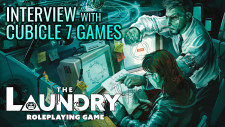

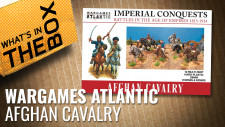
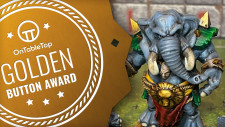
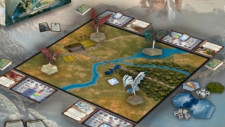
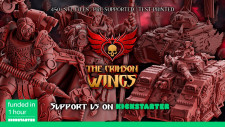
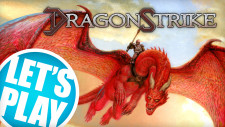

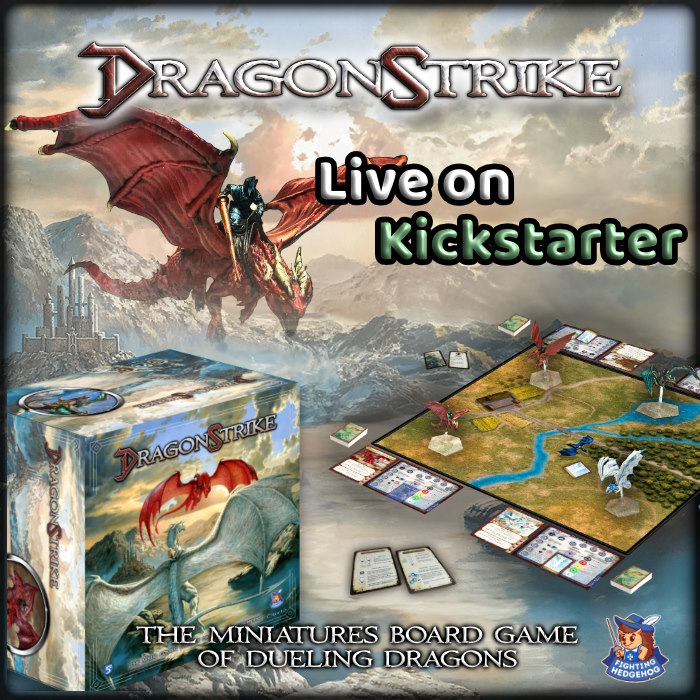

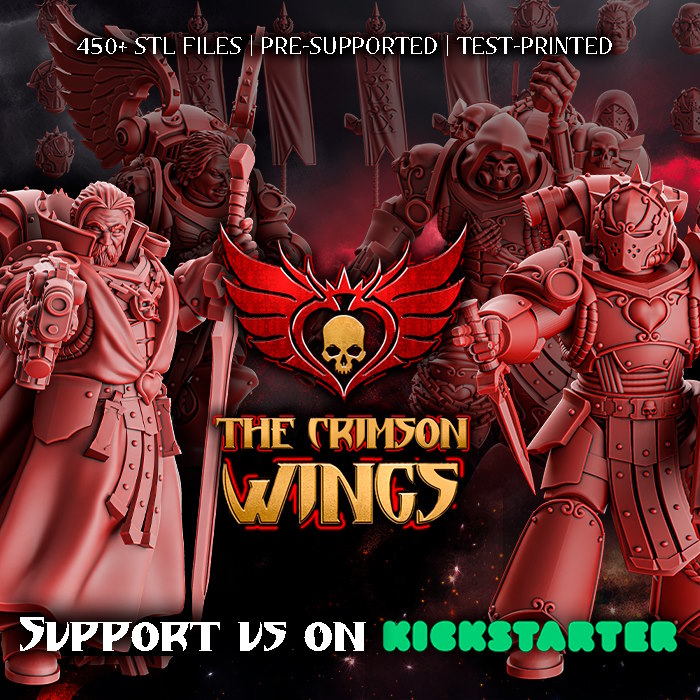


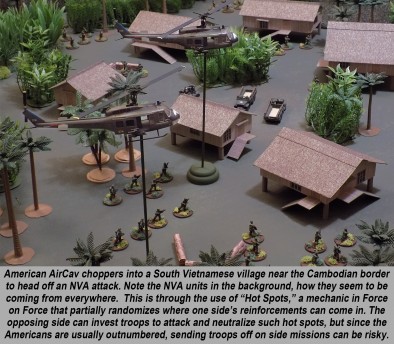
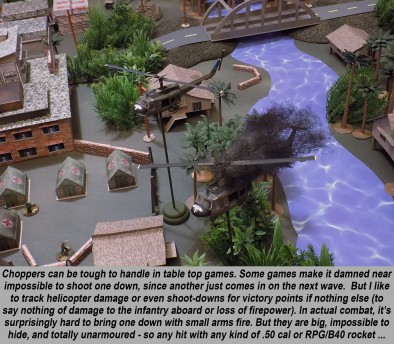
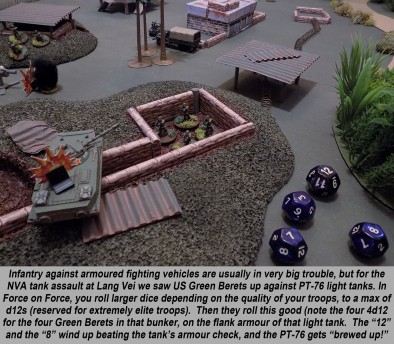
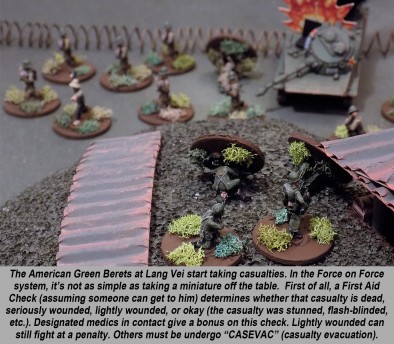

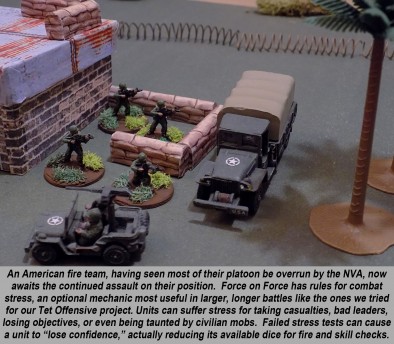
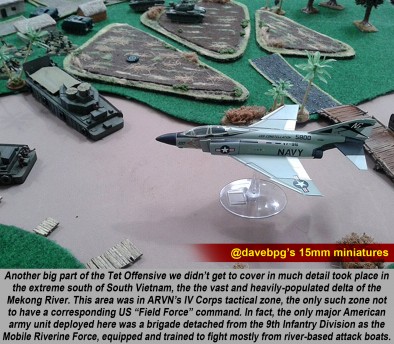
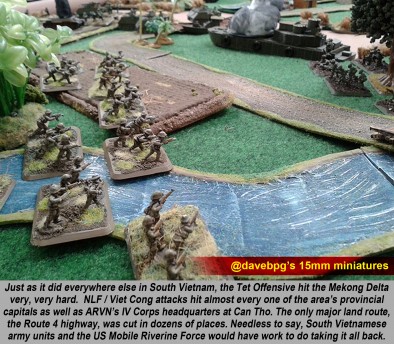
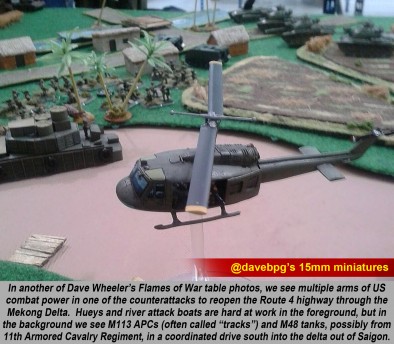
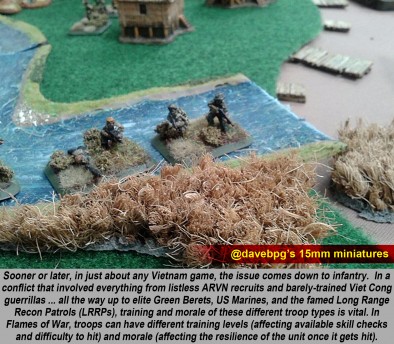
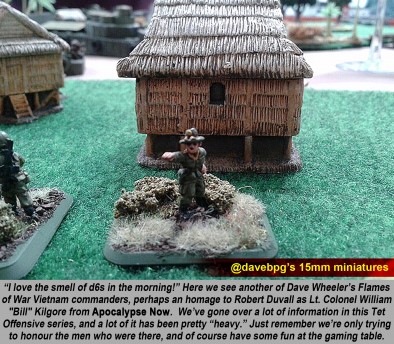

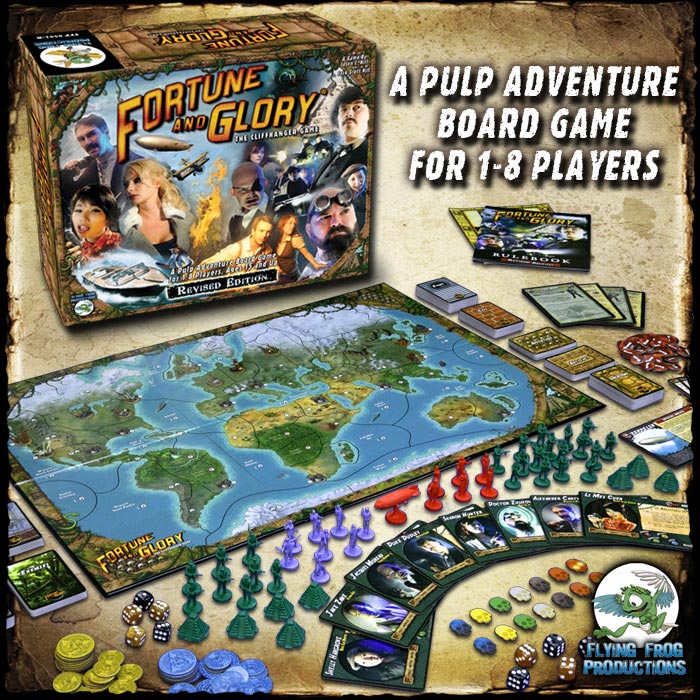

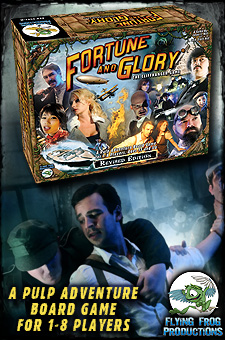
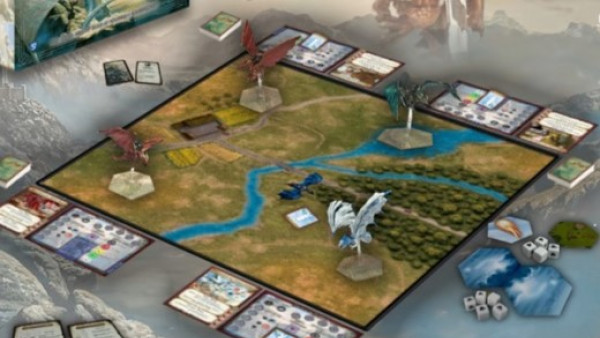
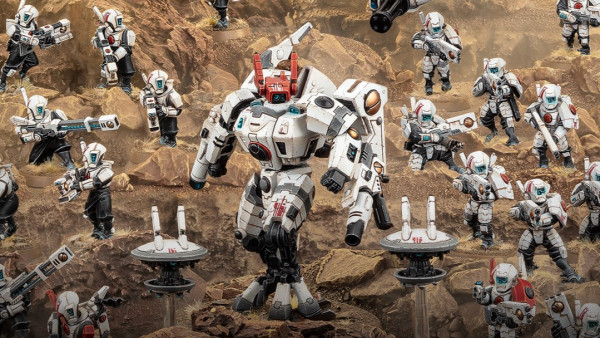
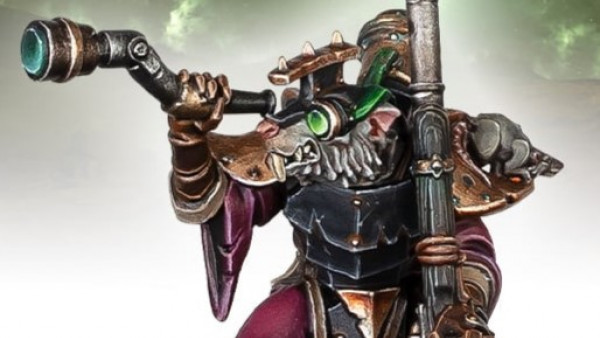
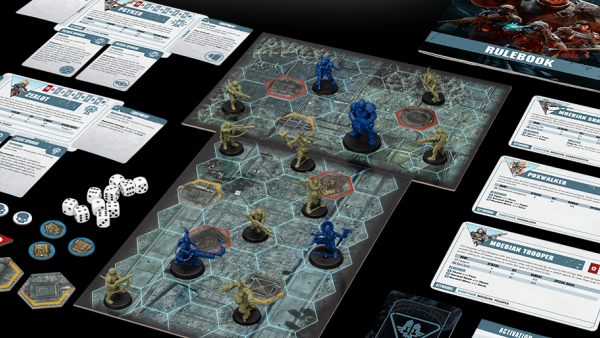
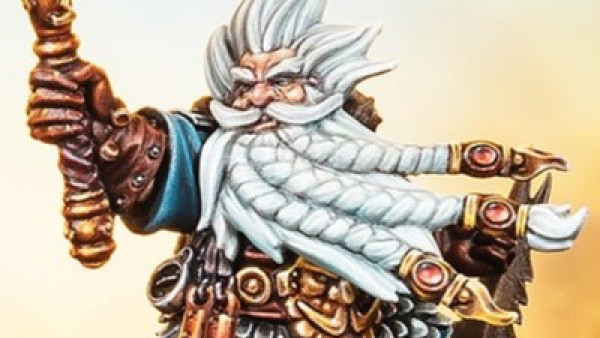

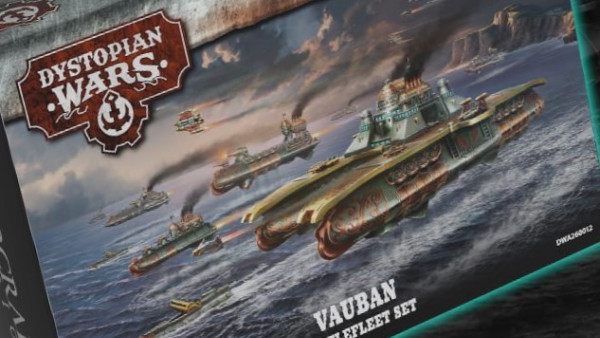
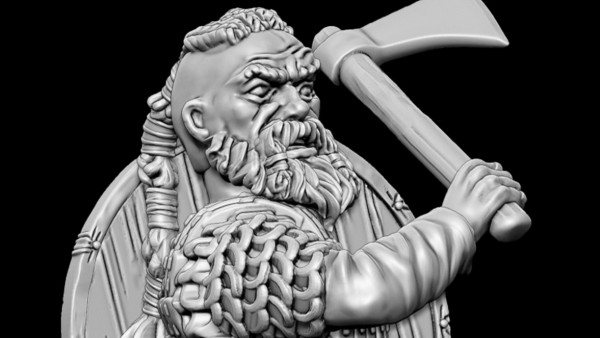



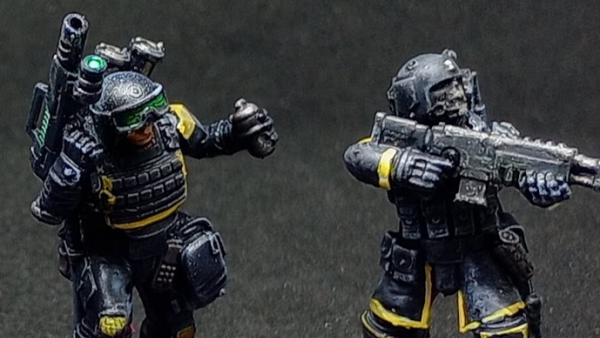
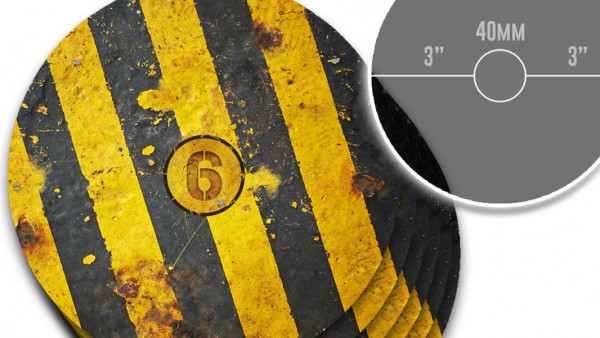












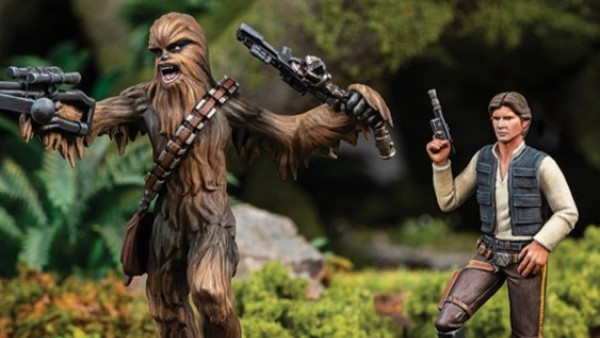
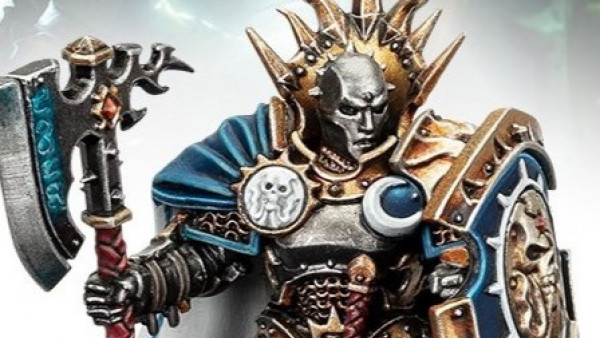
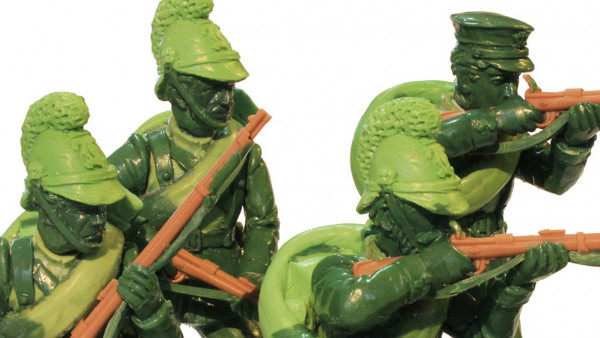

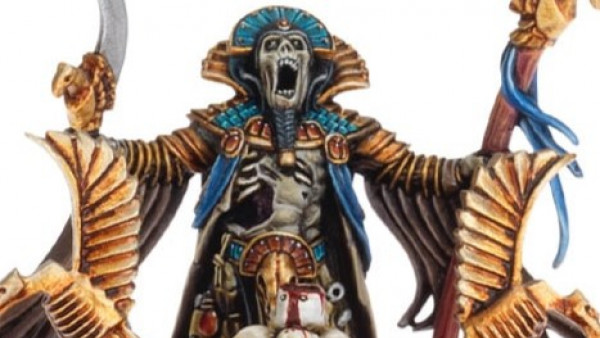
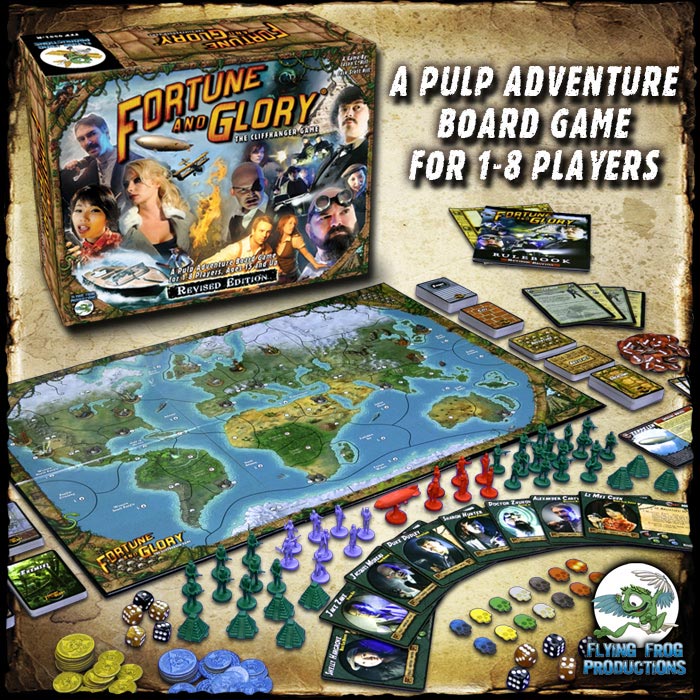

Superb series. Thoroughly enjoyable read. Well done.
Thanks very much for kicking us off, @c0cky30 – and thanks very much for the kind words, especially coming from someone who’s produced some great Vietnam wargaming content yourself! 😀
http://www.beastsofwar.com/groups/historical-games/forum/topic/my-chain-of-command-vietnam-war-blog/
Wow an amazing end to an amazing series well done. One of the big appeals to me is that I can essentially “Play the Movie” to get into the era then move on to more historical stuff once I’m comfortable in the period. Basically the same way I got into Force on Firce by playing the “Day of the Rangers” Book and using Blackhawk Down as a reference before moving on to Russians in Afghanistan. The Flames of War stuff looks very cool and I especially like the waves of Helicopters. Do I rush the objective or get numbers on… Read more »
I haven’t read it yet so no spoilers about who won please
Who won the war? Okay, we’ll be quiet. Who won the Tet Offensive? It’s fifty years on and people are still arguing, so apparently the issue still isn’t decided. 😀
The Media won and lost the war look at the power they have now they bug peoples phones n make storylines up to the point its different to know what’s true.
I don’t know about the media bugging people’s phones, but there’s no doubt that today’s media companies (i.e., internet companies) are mining, storing, and selling our personal and browsing data. And there’s no doubt that the new environment of algorithm-driven internet media has contributed dangerously to the “echo chamber” culture we now live in. With people increasingly reliant on outlets like Facebook and Twitter for news and opinion, and with trend and news feeds keyed only to provide you with what you’ve “liked” in the past, all you’re hearing are opinions with which you’re already in agreement. Soon there is… Read more »
Yes it was a big story last year with the Sun newspaper that is still going through the courts
its Scarry how much they are changing opinions good and bad depending on how they cover story’s today @oriskany
Like Orwell wrote in 1984: “He who controls the past controls the future. Who controls the present controls the past.”
We’re just slingin’ out the quotes today, aren’t we?
Well that very true but they went way to far one of the phones they cracked was a missing kid so because they were going in to see messages the police kept searching thinking she was still alive & I don’t think they have the killer now? @oriskany
I’m not familiar with the case, @zorg . 😀
It was the News of the World Milly Bowler case got to see they got someone I’ll not put the link it a bit Gorey.
http://www.huffingtonpost.co.uk/entry/news-of-the-world-closed-six-years-ago-amid-phone-hacking-scandal-but-where-is-everyone-now_uk_595e1f52e4b0615b9e8f5b7a
Inspiring as ever!
Thank you very much for the series @oriskany & co.
I’m gonna miss my weekly dose of jungle warfare.. 😉
Thanks very much, @suetoniuspaullinus ! I’ve really liked the Vietnam figures you’ve been putting up over on the WAYPAN thread! 😀
http://www.beastsofwar.com/groups/painting/forum/topic/what-are-you-painting-now-2018-waypn/?topic_page=27#post-227543
Another excellent series, very informative. Can’t wait for the next one to brighten up my Mondays.
Thanks very much, @gremlin – happy to say the next one is already started. A little bit of a smaller topic, but hopefully still interesting. We’re also hopefully working on some Great War material to commemorate the 100th Anniversary of the 1918 campaigns that closed the conflict, and also a certain very, very big tank battle in *cough* July *ahem* – sort of a 75th Anniversary thing? (*shhhh). 😀
Great Wrap Up! This leaves us with the importance of TET and @davepbg ‘s section has made me curious to see what changes we will find in FOWNAM.
Thanks, @gladesrunner – from what I have read the Nam updates will bring the FoW Vietnam material out of the “v3 era” and into the general Team Yankee rules framework. If it’s anything like the Team Yankee we played at the boot camp, it’ll be awesome! 😀
Thanks you two heroes for the worthy end of this series. According to what Dave said on the artillery pieces, we´ll never see them on the tabletop with one exception and … hooray … we have a scenario, “attack on a firebase”. I guess operations like this were integral part of the (Tet) offensive actions by NVA and VC. However, I have two questions left: Mortars do not count as artillery in this respect? What is the biggest artillery piece we would expect to see on the tabletop? Is it anything that doesn´t need to be towed, i. e. all… Read more »
When if comes specifically to FoW Vietnam questions, @jemmy – I will defer to @davebpg or other experts like Bothi or Andre77 or James123t. In Force-on-Force, artillery of ANY kind really is always off-board (including mortars) unless they are on as objectives. It’s not so much a question of weapon size as weapon range and indirect fire capability. I’ve had 120mm smoothbore tank guns on M1A2 Abrams battle tanks in Fallujah street battles, but even 60mm mortars (with ranges of 1.5-2 km) would be literally 20+ FoF tables away (3′ table at 1:72 = a board of only 72 yards,… Read more »
Great series 🙂
Vietnam and especially the Tet offensive highlight how much impact the politics at the homefront have on war.
As von Clausewitz is supposed to have said : ‘war is the continuation of politics by other means’
I never read it, but thanks to the power of google we have access to this sort of stuff :
https://www.clausewitz.com/readings/OnWar1873/BK1ch01.html
Not easy to read by any means, but like Sun Tzu’s ‘art of war’ it is worth a look.
It is scary and impressive to think that he already knew some of the principles that became reality.
I would agree that von Clausewitz laid out principles and maxims for war in the late 19th and the first half of the 20th Centuries. The comparison between Clauswitz and Sun Tzu is always an interesting one. Both sort of had a similar view point on the holistic “totality” of war, but applied it very different ways. Sun Tzu’s most basic precepts (and super-paraphrasing and generalizing here) is – War is just a part of state affairs. For the state to get what it wants, war is just one tool in a broad array of tools, to include diplomacy, economics,… Read more »
Anything from that era (= Sun Tzu) has a lot more in common with mythology and less with actual history, but hey … I’m sure people will wonder about those little metal men they find in our houses in a few hundred years 😉 And whether he was a real person or not … there’s no denying that what was written makes sense. Besides … people have fought wars over words that certain fictional authors are said to have written. That’s all we ought to say about this, right? anyways … It’s kind of interesting how real world tactics described… Read more »
That’s right, @limburger, I can see it now. Twenty thousand years after the Pandemic Plague wipes us off this spinning blue speck, the Kardishev-II level alien race that finds our bones and ruins will try to unravel what all these tiny metal men were about. Clearly these figures were meant to represent an idealized perception of their own anatomy, but it’s unclear why they were so small. It’s certain they held great cultural and perhaps even religious importance, carefully attended, decorated, and maintained by an elite class of priests we think were called “gamers,” and reverently housed in shrines called… Read more »
Great read and a fabulous gaming resource once again!!!
……but now, can we please get back in the bush?
The bush is always ready and waiting for you, @raglan . 😀
Thanks, glad you liked the series. Can’t wait to see your finished figures in the support thread!
http://www.beastsofwar.com/groups/historical-games/forum/topic/wargaming-in-vietnam-its-time-to-start-your-tour-of-duty/?topic_page=4&num=15#post-227619
A nice finally guys its hard to not have opinions on such a controversial war were the troops got the brown Stinky end of the stick instead of the politician’s for the mess this war was.
Thanks, @zorg – nothing wring with having opinions, so long as they are based on at least some crumb of fact, they’re proposed in a civil manner, and everyone remains willing to hear others out. So far these threads have been exemplary in that regard, more proof that this truly is a great community. 😀
Yes very informative posts with everybody giving new information from their country’s viewpoint.
Now if we could just get someone from Vietnam on here to post some perspective . . . 😀
I know one thing about Vietnam top gear was having a race through the country and they found the tail of a B52 in the middle of one of the town’s they went into. later a field with APC’s Tanks and the like dumped rusting away.
One thing I’ve found pretty surprising in gathering research for this series was all the photographs of memorials and landmarks in Vietnam for these battles. Most of them have old American equipment set up on display, some of it refurbished, some of it intentionally left in its charred, burnt-out, rusting state. Khe Sanh apparently has quite the site with a small museum and lost of equipment on display.
http://hueprivatecars.com/khe-sanh-combat-base-hue-dmz-tour/
The field may have been the museum they went to?
I think the site of the old American air base is now coffee farms. 😀 – with the museum, visitors center, and old tanks / APCs / helicopters all nearby.
This is the episode in Vietnam
https://topgear.oldtvepisodes.com/episode/watch-full-episode-of-top-gear-vietnam-special-series-12-episode-08-s12e08/ @oriskany
This is a pretty funny show, @zorg ! 😀 I like where the three guys are standing in the square at the beginning and all getting the Vietnam movies wrong. Then they think they’re rich, ready to buy Maseratis and Lamborghinis with their 15 million dong, only to find it’s worth about a thousand bucks. And of course the biggest guy winds up with the most ridiculously undersized scooter. “They will try to do in eight days what the Americans could not do in ten years – get to Hanoi . . . ” Well, the Americans never invaded North… Read more »
Yeah the Guy’s are nuts on the show.
When he’s taking the motorcycle driving test –
“Is he . . . the most ridiculous human being that has ever lived? Or is living now?”
They are funny stunt’s on the show you will have to see the one with the trucks but the stunts got to weard at the end when they got dropped by the BBC
https://topgear.oldtvepisodes.com/episode/watch-full-episode-of-top-gear-series-12-episode-01-s12e01/
I guess all shows “jump the shark” eventually. 😀
Yup
I’m tempted to argue that the troops in any war get the brown stinky end of a stick …
It’s always the young dieing for the beliefs of the ‘old’ guard at home.
Best not to think of this stuff to hard, because in the end it’s just a game to us (and let’s hope that is all it ever will be).
Just a game to us . . . Absolutely. And since we’re apparently on a quote-fest tonight . . . who can forget the prophetic writings of H.G. Welles who wrote Little Wars in 1913 – one of the world’s first “wargames” – comparing playing wargames against doing it for real “in 1:1 scale” . . .” And if I might for a moment trumpet ! How much better is this amiable miniature than the Real Thing! Here is a homeopathic remedy for the imaginative strategist. Here is the premeditation, the thrill, the strain of accumulating victory or disaster —… Read more »
Great read lads
Thanks very much, @rasmus ! 😀
Well done to Jim and all those contributors who helped in this fine series. I surprised you with my titbit on the Brits early war, but you definitely go me back with the background and details on Tet, Made me realise how little I didn’t know. As I said in part 1 , I do have memories as a 9 year old of the new coverage of the battle for the Embassy, Not sure how I ended up gaming Vietnam when I came out of the RAF in 1981, but think it as going to Salute in *3 ans the… Read more »
That should be Salute in 1983!
Thanks very much, @bobcockayne ! 😀 Yes, your surprise information on British involvement in 1946 was interesting. In all fairness, though, that was the First Indochina War (French vs. Viet Minh), not the Second Indochina War (“Vietnam War” – US/South Vietnam / allies vs. Viet Cong and NVA). So my record on Vietnam still stands! 😀 😀 😀 Just kidding of course. 😀 Yeah, I know the feeling on trying to put together the minis for a Vietnam-themed army. I went to Battlefront and everything on the Vietnam page was taken down, I guess they were gearing up for the… Read more »
“That should be Salute in 1983!” – gotcha. 😀
Dave Drake was in the Black Horse as an Intelligence operator during Nam , so they were more him writing about his experiences in a fictional setting , but you probably know that, did talk to him via E-mail a few years back. I was writing articles for Miniature Wargames, for the Hammers Slammers game, and was checking with him if he had any problem with me writing unit histories for fictional units in his Universe for a supplement I wanted to to write, but then never got time, for my own unit Mallets Manglers. Came across as a really… Read more »
Awesome! The guy I game with a lot here in Florida, @aras , is a big Hammer’s Slammers fan. I read a couple of the novels back around 1998-2000 (I remember the job I was working at the time). I never knew there was a game for that, though. I may have to look into this and send a link to my buddy. He’d probably be interested. Another great Vietnam – Sci Fi crossover was The Forever War – written in the mid-70s by another Vietnam veteran. Won tons of Sci Fi fiction awards, and it also deals extensively with… Read more »
Yup Heres the link http://www.hammers-slammers.com/the_crucible.htm John Treadway who now edites Minature Wargames wrote them: Think they are still in print. Did a whole pile of original tongue in cheek versions of units mentioned in the books that developed their own life.: Units such as the El’ Bharmies East Riding Constabulary (originally that was the only word I could get to rhyme with the original West Riding Yeomanry. And of course the infamous Rebels of the Conservative Revolutionary Alliance Party and the Gov Forces of Patriotic Organisation of National Government. As most members of The Manglers joked they were there ‘To… Read more »
Know the Forever War well, and read the follow up book Forever Free.
@bobcockayne – Making up “tongue in cheek” units: Forever ago my brother @amphibiousmonster and I created an alternate history of WW2 for Panzer Leader, where one of the major fronts of WW2 takes place in the continental United States. We had fun coming up with redneck units, hippie units, all kinds of goofy “flying circus” auxiliaries. We mounted an invasion of South Florida once, with some of the landings in Key West, where Federal forces had to overcome the “Heroes of Margaritaville – Irregulars” -etc. 😀
@bobcockayne – re: Forever War – I could have sworn I saw a graphic novel version of it somewhere, but this would have been 25-30 years ago.
hmmm upcoming content…big tank battle in July….75th anniversary…will we be trading in Huey’s and jungle for T34’s and muddy open grasslands? If so, we’re gonna need a bigger table.
Я не знаю, что вы имеете в виду?
Я не знаю, что вы имеете в виду?
Only in the mating season…It was ghastly
Now, now … let’s not give people the wrong idea. 😀
Kurses . You found me out
Ich weiß nicht, was du meinst?
An excellent series. Thank you.
Thanks very much, @stuart20 ! 😀 Glad you liked it.
A truly great end to a slice of a truly difficult subject matter @oriskany. May I say you handled it very well. Vietnam was truly a case of no winners just some guys lost more than other guys and anyone that it touched was a victim of it, including their families back home. This I think will remain until the Vietnam War is no longer in living memory. It still goes on for me. So many people have looked to great detail of this war looking for answers that never gave themselves up. I think some of the answers is… Read more »
Thanks very much, @jamesevans140 – Indeed I would totally agree that that the deeper one dives into the detail of Vietnam, the further one strays from obtaining any meaningful answers. I would say this applies to the historical pursuit of Vietnam as much as the actual conduct of the war at the time. To Summarize, Over-Generalize, and Over-Simplify, (SOGOS – my new acronym which apparently I’ll be needing more and more in these articles 😀 ) – the American leadership got so “stuck into the weeds” winning individual battle sand counting bodies that they didn’t see or understand the larger… Read more »
Great to here that another series is on the way. I am tidying up some WW1 stuff, I will send you a copy once it is done. The issue concerning On War is that it should never have been printed. His money chasing wife printed it after his death against his expressed wishes. As such we are missing the most important parts of it. Most people have no idea on how to read Clausewitz and thus have no idea about what they are saying. The book was written at the height of the age of reason philosophy. The book is… Read more »
Have to admit I am completely unfamiliar with De Jomini. While I would continue to hold up Sun Tzu over Clausewitz 😀 I would certainly never propose to toss Clausewitz out the window completely – even if “history has passed him by” to a certain degree in the age of (by necessity) non-kinetic warfare, at least among first- and second-rate powers. There are still sections and ideas in those writings that certainly hold water. Nor would I hold up Sun Tzu as some kind of Gospel – his writings on the specifics of the use of flame and how to… Read more »
Very interesting reply @oriskany. As we all know war exists on several layers within the space time continuum. The international military community also goes through periods where one kind of thing gets their interest over other things. It is very similar to the fads of fashion and no less logical or illogical. For whatever the reason the Prussian/German military culture has driven much of European war culture since Napoleon. Right up to the late 1890’s De Jomini was their man and Clausewitz was an idiot. Then they dropped De Jomini and purged him from their textbooks. Clausewitz was taken up… Read more »
If you want a book @oriskany that contains all their writings and compare them try this one.
https://www.amazon.com/gp/aw/d/B007F3D9YY/ref=mp_s_a_1_40?ie=UTF8&qid=1519863169&sr=8-40&pi=AC_SX236_SY340_FMwebp_QL65&keywords=De+Jomini
It is in my E-library.
Cu Chi Tunnels are preserved in two locations:
– Ben Duoc Tunnels (base of Party Committee, Command of Saigon Military Region – Cho Lon – Gia Dinh) in Phu Hiep hamlet, Phu My Hung commune, Cu Chi district, Ho Chi Minh City, publicized by Ministry of Culture and Culture received National Historical and Cultural Relics under Decision No. 54 / VHQD of April 29, 1979.
https://privatecartransferhoian.com/
All too true @oriskany. A nation-state can hardly afford war now as it is. In the old days it was how many days could the war last before they would have to go nuclear. Today it is how many days can they last before they are bankrupt. Nor can the nation-states get anywhere near the donations either. Hezbollah’s costs for it’s war of 2006 with Israel was mostly funded by international donations. Are we going the way that only private enterprise can afford war? If so how would the nature of war change? What would be the plight of the… Read more »
I am Vietnamese. I am the next generation of this war. I don’t blame this atrocity at all. Because I don’t understand how America thought at that time. And I believe it is also the right choice for your country. But now the two countries are friends. Try to maintain this friendship for the beautiful.
Catching up on this series again after getting the urge to game Vietnam. It’s a truly excellent resource @oriskany *salutes*
Thanks very much, @somegeezer ! Always heartening to know these old article series sometimes still get a look and are useful now and then to fellow wargamers!
I am Vietnamese. I am the next generation of this war. I don’t blame this atrocity at all. Because I don’t understand how America thought at that time. And I believe it is also the right choice for your country. But now the two countries are friends. Try to maintain this friendship for the beautiful.
https://tintuc.hahalolo.com/
Vietnam!